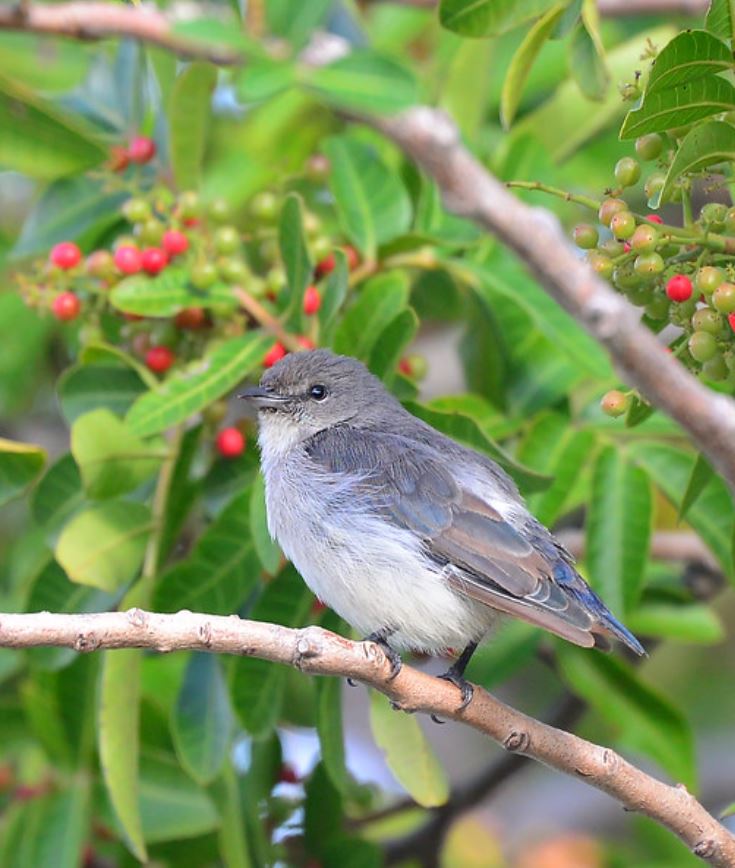His Chest Of Fiery Red Is Accentuated By A Strategically Placed Black Stripe Ensuring This Bird Stands Out In Electrifying Fashion!

Image

The mistletoebird (Dicaeum hirundinaceum) measures 9 to 10 cm long, weighing in at 7.5 to 11 grams. Male birds are glossy blue to black on their upperparts with a bright fiery red chest along with a splash of red under the tail. Below the red chest is a black stripe running down the center of his white belly. The eyes, bill, and legs are black. The bill itself is just over a centimeter long, slender, slightly downcurved, and sharply pointed.

Female birds are dark gray on their upperparts with a touch of pink under their tails.
Juvenile birds look very similar to female birds, though they have an orange to pink bill, instead of black.

This bird is endemic to most of Australia (excluding Tasmania), though also present in the eastern Maluku Islands of Indonesia in the Arafura Sea between Australia and New Guinea.

They are widespread over many parts of the Australian mainland, pretty much wherever Mistletoe is present.

The Mistletoebird is highly adapted to its diet of mistletoe berries. It lacks the muscular gizzard (food-grinding organ) of other birds, instead, it has a simple digestive system through which the berries pass quickly, digesting the fleshy outer parts and excreting the sticky seeds onto branches. The seed can then germinate quickly into a new plant.

The breeding season for Mistletoebirds is from August to April depending on where they live in Australia when a pear-shaped nest made from matted plant down and spider web is suspended from a branch or twig. The female builds the nest and incubates the eggs on her own, though the hatchlings are fed by both parents.

There was an ecological balance between the parasitic mistletoe and their host trees before this balance was disturbed with excessive forest clearing. Land clearing to accommodate farming practices and population growth created an imbalance that resulted in excessive infestations of mistletoe in some areas leading to forest degradation and a total lack of mistletoe in other areas.

This bird, however, is described as of least concern on the IUCN list.
